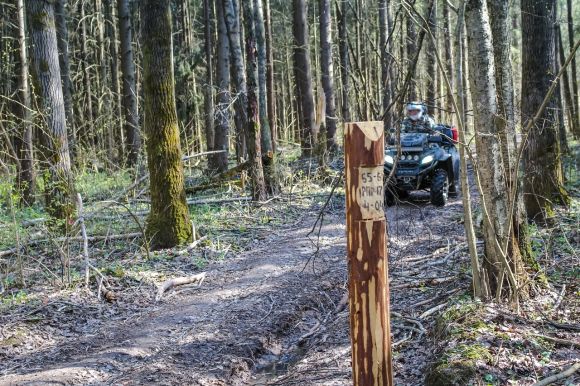Off-camber riding is a challenging skill that every off-road rider should master. It refers to riding on a slope where the ground is sloping sideways, making it difficult to maintain balance and control. This article will provide you with valuable tips and techniques to help you master off-camber riding off-road.
Understanding Off-camber Riding
Off-camber sections are common in off-road trails and can be quite intimidating for riders. The key to mastering off-camber riding is understanding the principles behind it. When riding on an off-camber slope, the bike’s weight shifts to the lower side, making it more difficult to maintain balance. Additionally, the tires have less grip on the sloping ground, further adding to the challenge.
Body Positioning
Proper body positioning is crucial when tackling off-camber sections. To maintain balance, shift your weight towards the lower side of the bike. This will help counteract the bike’s tendency to tip over. Keep your knees bent and elbows slightly out, allowing you to absorb any sudden movements or bumps on the trail. By maintaining a strong and balanced body position, you’ll have better control over your bike.
Throttle Control
Maintaining steady throttle control is essential when riding off-camber. Avoid sudden bursts of acceleration or deceleration, as they can upset the balance of the bike. Instead, apply smooth and consistent throttle input to keep the bike stable. If you feel the rear wheel starting to spin, modulate the throttle to regain traction. Practice throttle control on various off-camber sections to develop a feel for the bike’s responsiveness.
Braking Technique
Braking on off-camber sections requires finesse and control. Avoid grabbing the brakes abruptly, as this can cause the bike to slide or lose balance. Instead, apply the brakes gently and progressively, gradually reducing your speed. It’s important to use both the front and rear brakes simultaneously to maintain stability. Practice braking on off-camber slopes at different speeds to improve your braking technique.
Line Selection
Choosing the right line is crucial when riding off-camber. Look ahead and identify the smoothest and flattest path on the slope. Avoid going too close to the edge of the slope, as it increases the risk of sliding or tumbling down. Aim for the middle of the slope, where the ground is typically more stable. As you gain experience, you’ll develop a better understanding of the optimal line selection for different off-camber sections.
Developing Confidence
Off-camber riding can be mentally challenging, especially for beginners. Building confidence is key to mastering this skill. Start by practicing on easier off-camber sections and gradually progress to more challenging ones. As you become more comfortable, increase your speed and experiment with different techniques. Visualize success and focus on maintaining a positive mindset. With time and practice, you’ll develop the necessary confidence to tackle any off-camber section with ease.
Conclusion: Mastering Off-camber Riding
Mastering off-camber riding off-road requires a combination of skill, technique, and experience. By understanding the principles behind off-camber riding, maintaining proper body positioning, and practicing throttle control and braking techniques, you can improve your ability to navigate off-camber sections. Additionally, selecting the right line and developing confidence are essential elements of mastering this skill. With dedication and practice, you’ll become a proficient off-camber rider, able to tackle any challenging trail with confidence. So get out there and start honing your off-camber riding skills today!
